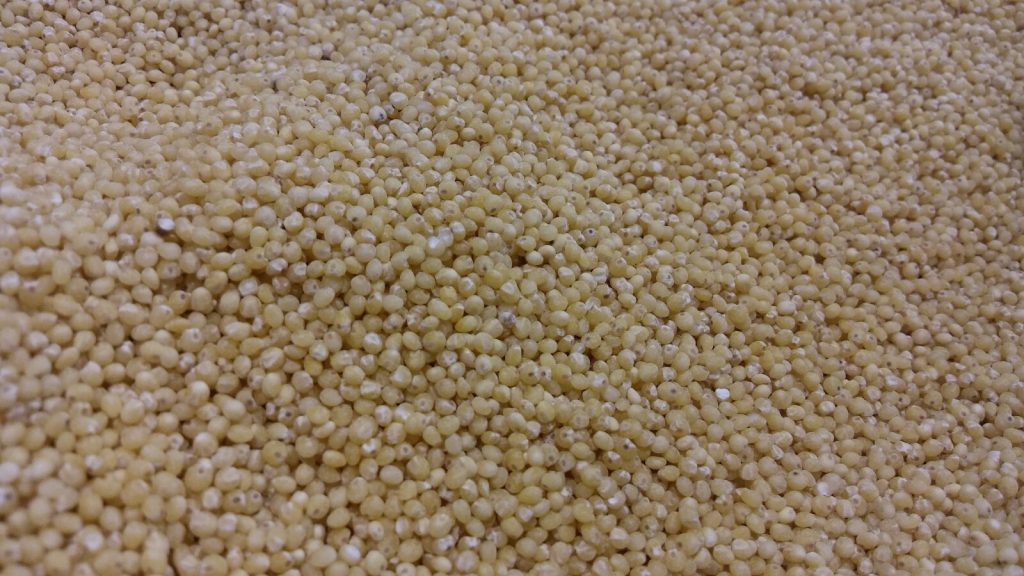
Here’s another period of time mentioned three times in the Yijing:
‘Corruption. Creating success from the source.
Fruitful to cross the great river.
Before the seed day, three days. After the seed day, three days.’
‘Brightness hidden, flying away,
His wings hanging down.
The noble one is on the move,
For three days, eats nothing,
Has a direction to go.
Those in authority have something to say’
‘Constancy, good fortune, regrets vanish.
Nothing that does not bear fruit.
With no beginning, there is completion.
Before threshing, three days.
After threshing, three days.
Good fortune.’
Are there connections here? Story-telling, a pervasive theme?
18.0
‘Corruption. Creating success from the source.
Fruitful to cross the great river.
Before the seed day, three days. After the seed day, three days.’
I’m always impressed by the active positive drive of this Oracle text. Corruption is a truly nasty concept – dark magic, poisonous creatures, an ancestral curse – but the hexagram marks a time to create success and cross the river. Now is the moment to expose the corruption, find the source of the trouble and deal with it. This marks a radical change of direction: instead of taking the path of least resistance, following the riverbank and accepting how it is, we’re to go against the current, cross the water and start something new. Wilhelm called the hexagram not just ‘Spoiled’ – which would have been a literal translation of the hexagram name – but ‘Work on What Has Been Spoiled’.

What I’ve called ‘seed day’ is jia 甲 day, the first of the Ten Heavenly Stems, and the first day of the ten-day week. The character also means shell, carapace or armour – a hard covering – and is associated with the east, spring, and the very beginnings of growth. So this is the right day for a new beginning, but why do we need three days before and after it?
Scott Davis has pointed out some sophisticated counting-games the Sequence is playing here – but even without knowing these, we can recognise the basic idea that this hexagram is not describing an overnight change: shifting the deeply ingrained patterns of Corruption, or placating a neglected and angry ancestral spirit, takes time.
Chucking the seed in some random direction and forgetting about it works well for dandelions, but not so well for crops: you need – literally – to prepare the ground. You want a fine, rich tilth to sow in (which leaves the gardener in me wondering why three days, not three months), and then you need somehow to prevent the mice and pigeons from devouring the lot before it can germinate. Three days of attentive work, before and after seed day.
Or in other words… to deal with corruption, work on what has been spoiled, you need time to understand the dark pattern you’re trying to disrupt, and great care and attention as you set out to replace it. Later – when the seed has taken root, when the habit is a little less unconscious – you can relax your vigilance a little. This is the beginning of a new cycle. (Perhaps ‘three days before this day, three days after it’ is not unrelated to the meaning of seven days?)
57.5 to 18
The fifth line of Hexagram 57, Subtly Penetrating, has a clear echo of the Oracle of 18. Only the name of the day has changed – from jia day, the first of the ten-day cycle, to geng 庚 day, which is the seventh:
‘Constancy, good fortune, regrets vanish.
Nothing that does not bear fruit.
With no beginning, there is completion.
Before threshing [geng], three days.
After threshing, three days.
Good fortune.’
And since 57.5 also changes to 18, it’s doubly clear that this is an intentional echo, a conversation between the hexagrams that calls for our attention.
This line implies a story: finding the good fortune through persistence in something that looks deeply unpromising. There have been regrets; with constancy, they will vanish, and nothing, even this, will fail to bear fruit. Even with a bad beginning – or, if we take this literally, even if it seems always to have been this way, with ‘no beginning’ – there can be good fortune.
In my experience, this is how 57.5 works out in readings: deeply-entrenched patterns of disappointment or failure, the challenge of 18, finally turned around by long, persistent ‘penetrating’ work.
Why three days before and three after? LiSe says, ‘It will take a long time to change what has been growing for a long time.’ I’d add that understanding, getting to the heart of the thing and learning how to engage with it takes time, like the penetrating action of the wind or of roots. It takes time to penetrate to deep understanding, time to realise how to act on it.
One dictionary tells me that the character geng shows ‘a picture of a tool for threshing grain’ – and processing grain, reaching the kernel, is a good example of human ‘penetrating’ work. Also, while the first stem jia is associated with spring and beginnings and a hard carapace, geng is associated with autumn and harvest.
If, like me, you’re a little unclear on what threshing would have entailed before mechanisation, here are some videos and images that could be eye-opening. (They also show the key role played by the wind in winnowing – aptly, for this hexagram of doubled xun.) Threshing is only one part of the work of harvest: it’s preceded by gathering, and followed by winnowing and storing.
36.1 to 15
18 and 57.5 are bound together by both structure and text. But what about the other ‘three days’ – is there a connection?
‘Brightness hidden, flying away,
His wings hanging down.
The noble one is on the move,
For three days, eats nothing,
Has a direction to go.
Those in authority have something to say’
There are obvious differences: only one set of three days here, no mention of a Heavenly Stem, and no connection through changing lines. (I wrote about its change to Hexagram 15 here.) The three days before and after in hexagrams 18 and 57 are all about change – preparing, grounding and realising it. Hexagram 36 in general is about not being able to change things: the prevailing regime is corrupt, this is beyond your power to change, so all you can do is to preserve your own light. The noble one begins the hexagram by taking flight, and these three days are spent not eating.
What’s the significance of not eating? I think it’s the inverse of ‘not eating at home’ in Hexagram 26, Great Taming:
‘Great taming,
Constancy bears fruit.
Not eating at home, good fortune.
Fruitful to cross the great river.’
There, not eating at home means eating elsewhere: finding work at court so one can be of greater service; taking on board new sustenance and new ideas; nourishing yourself and others in new ways. Eating stands for participation.
But at the beginning of Hexagram 36, when being an honourable man at court might mean finding yourself on the menu, the noble one is travelling but not eating. He will not be active at court, will not be diverted from his own journey, will not socialise and take other people’s ideas on board – in a nutshell, he is not participating.
And he doesn’t eat, or participate, for three days – until, we can imagine, he is well clear of the court’s realm of influence. If we try counting hexagrams, three steps on from 36, we’ll land on 38 (counting inclusively) or 39 – either way, we’ll skip over Hexagram 37, and not join with People in the Home.
Connections
So… could this be connected with hexagrams 18 and 57? Could the three days’ fasted journey in 36.1 be the three days after jia day, or before geng day?
Counting games
Naturally, this is where I start counting hexagrams. And at first glance, this doesn’t get me very far. Counting inclusively, starting at 17/18, there are ten pairs of hexagrams from 18 to 35/36, and twelve from 35/36 to 57/58. This is disappointingly lop-sided, even if – after reading up on the Chinese calendar – it’s interesting to find groups of ten and twelve.
However… this is only asymmetrical in exactly the same way that the division of the whole book into Upper and Lower Canons is asymmetrical. The Upper Canon contains hexagrams 1-30, leaving 34 hexagrams in the Lower Canon. But if you count unique hexagram patterns, there’s actually perfect symmetry here: 18 patterns in each Canon. (For example, Hexagrams 35 and 36 are one single pattern of lines, just inverted, or viewed from opposite directions. Hexagrams 29 and 30 are two unique patterns.) LiSe explained this here.
And in the same way, if you count unique hexagram patterns, 35/36 is exactly at the mid-point between 17/18 and 57/58:
17/18 –
19/20 – 21/22 – 23/24 – 25/26 – 27 – 28 – 29 – 30 – 31/32 – 33/34 –
35/36 –
37/38 – 39/40 – 41/42 – 43/44 – 45/46 – 47/48 – 49/50 – 51/52 – 53/54 – 55/56 –
57/58.
The mid-point between jia day and geng day would be day 4, ding 丁 day. This is the yin fire day of the cycle. The component trigrams of Hexagram 36 are fire and the pure yin trigram earth.
The character ding 丁was originally drawn as a square or circle, and is widely thought to have represented a nail. One dictionary tells me it had an ancient meaning of ‘to beat, strike’, so perhaps the character showed the nail head seen from the perspective of someone hammering it in? A nail is something that is struck and levelled – a meaning of yi in the name of Hexagram 36.
Games like this are easiest to play if one can make up the rules and be outrageously selective. So I should also mention that there is a rival theory that the character ding was originally not a nail but a city wall. (It seems to have been written mostly as an outline, like walls, on oracle bones, and mostly as something solid, like a nail head, on bronzes. I should think that just reflects what’s easiest to inscribe on both materials – imagine trying to scrape out a solid shape on a plastron. You can have a look for yourself, here and here.) And the character also means robust, and a man of working age, and (in cookery), something finely diced into cubes.
Story telling
Still, I think I sense the outline of a story here…
We begin on day 1: create success from the source, cross the river and start the journey to deal with corruption. Identify the angry ancestor whose curse is causing the symptoms, and plant the seed of a different way of being.
This will be a long, lonely journey. In times of corruption, it is important to separate yourself clearly from the prevailing regime and the normal ways things are done. Three days after seed day start to look like three days without participating. You’re making yourself different; people are bound to talk.
But in the end, as you reach day 7, you can look back: constancy bears fruit and regrets vanish. From such unpromising beginnings, there is still completion, and threshing will reveal the kernel that was once hidden.




I just LOVE this posting! In my ‘human design cart’ my cross of incarnation is ‘Work on What’s been Spoiled’ This is a perfect PERFECT and timely post. I have a LOT that has been spoiled and have just begun the first steps towards ‘un-earthing’ buried treasures. Literally, an 800 sft storage space with contents from two separate water damage incidents; one at my home and the other in my work/office space. Been there since 2010. Thanks so much! Feeling grateful for NAMING the process of solo sometimes lonely work. Gives me hope it’s all worth it.
I can absolutely relate to having a whole lot of your life in a storage container. I wish you very happy and serendipitous excavating!
three days may relate to the new moon period where the moon is not visible, maximum of three days. This period is often associated with fasting. I think this is significant as far as hex 36 goes.
That’s an intriguing suggestion, thank you! My first thought: but a dark moon would be a bad time to start a journey. My second thought: yes, normally it would, but don’t forget what the hexagram is called…